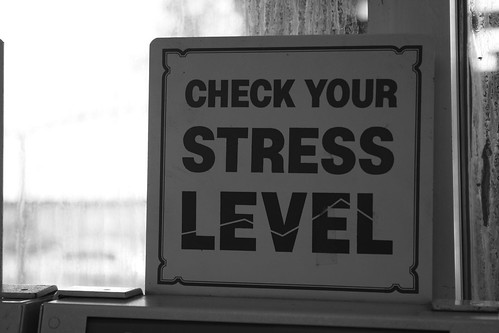Should you be as nice as humanly possible to your doctor?
ctors take pain more seriously when they like the patient: This study examined the influence of patients’ likability on pain estimations made by observers. Patients’ likability was manipulated by means of an evaluative conditioning procedure: pictures of patients were combined with either positive, neutral, or negative personal traits. Next, videos of the patients were presented to 40 observers who rated the pain. Patients were expressing no, mild-, or high-intensity pain. Results indicated lower pain estimations as well as lower perceptual…
1 min read
Does the placebo effect make any sense at all?
in over 151,000 readers. Get a free weekly update via email here. Related posts: How To Stop Being Lazy And Get More Done – 5 Expert Tips 6 Things The Most Productive People Do Every Day New Harvard Research Reveals A Fun Way To Be More Successful
1 min read
5 ways to reduce stress and anxiety:
Chew gum. 2) Get some vanilla ice cream. 3) Watch comedy or listen to music. 4) Want to reduce anxiety about your relationship? Have more sex. 5) Want to worry less about losing your job? Here's a great fact to consider: worrying about losing your job is worse than losing your job. Join over 190,000 readers. Get a free weekly update via email here. Related posts: How To Stop Being Lazy And Get More Done – 5 Expert Tips How To Get…
1 min read
Why do some people get sick so often and others never do?
ck of sleep makes you more susceptible to illness: Background Sleep quality is thought to be an important predictor of immunity and, in turn, susceptibility to the common cold. This article examines whether sleep duration and efficiency in the weeks preceding viral exposure are associated with cold susceptibility. Methods A total of 153 healthy men and women (age range, 21-55 years) volunteered to participate in the study. For 14 consecutive days, they reported their sleep duration and sleepefficiency (percentage of time in bed actually asleep) for the previous…
2 minutes
How important is having a feeling of control over your life?
ry important unless you're a fan of heart attacks: Objective: We examine the prospective relationship between mastery, where limited mastery is defined as the inability to control negative emotions (and perceiving stressful experiences as beyond personal control), and cardiovascular disease (CVD) mortality particularly among individuals at apparently low CVD risk. Design: Prospective population-based study of 19,067 men and women, aged 41–80 years with no previous heart disease or stroke at baseline assessment. Main Outcome Measures: Primary outcome measure CVD mortality.…
1 min read
Does the placebo effect work — even when you know it’s a placebo?
ople were told they were being given “placebo pills made of an inert substance, like sugar pills, that have been shown in clinical studies to produce significant improvement in IBS symptoms through mind-body self-healing processes” and still got the benefits of the placebo effect: Background Placebo treatment can significantly influence subjective symptoms. However, it is widely believed that response to placebo requires concealment or deception. We tested whether open-label placebo (non-deceptive and non-concealed administration) is superior to a no-treatment control with…
2 minutes
10 things you need to know to be happier:
The three keys to happiness are pleasure (stuff that feels good in the moment), meaning (belief/religion/philosophy), engagement (friends.) 2) Exercise and religion both make us happy and it's because they provide small boosts to well-being on a regular basis. 3) Money isn't going to make you much happier. It might make you unhappier. 4) Be a selfish boss by making sure your employees are happy. 5) You're probably still shaking your head at that last statement. You know why? Because we're…
1 min read
What is happiness?
rvard happiness expert Daniel Gilbert explains it here. Most interesting takeaway from the video: "We are happy when we have family, we are happy when we have friends and almost all the other things we think make us happy are actually just ways of getting more family and friends." Daniel Gilbert is the author of the bestseller Stumbling on Happiness. More on his work here. Join over 151,000 readers. Get a free weekly update via email here. Related posts: 6 Hostage Negotiation Techniques…
1 min read





